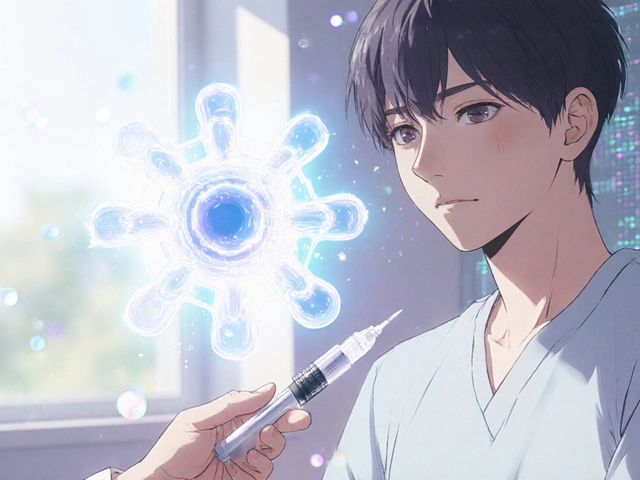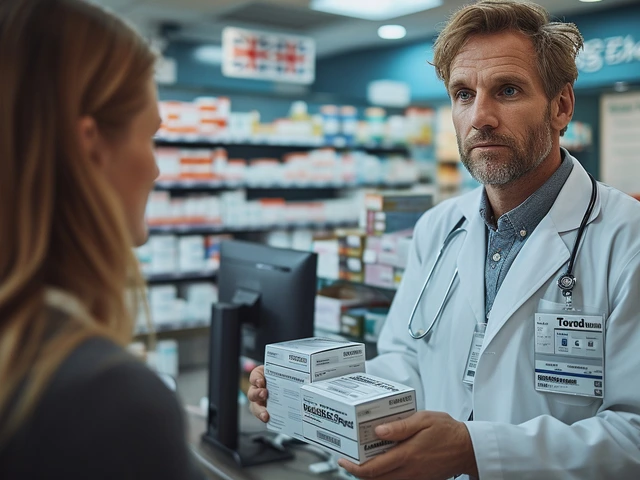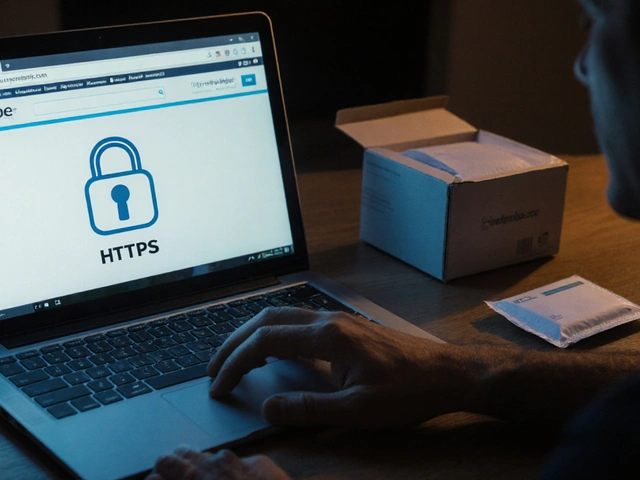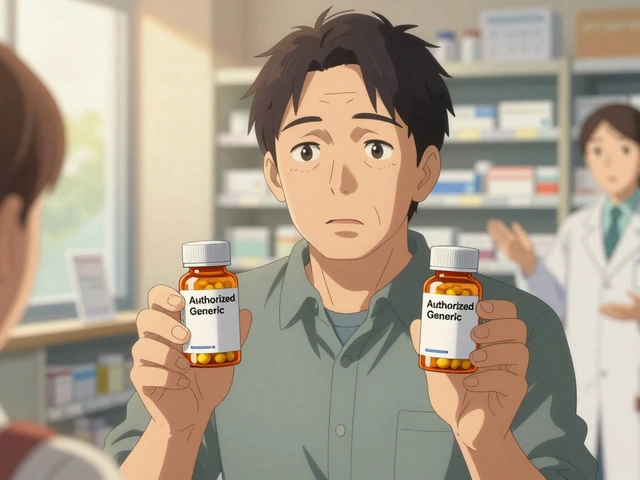When you’ve been taking a biologic drug for years - maybe for rheumatoid arthritis, psoriasis, or Crohn’s disease - switching to a biosimilar can feel scary. You’re not just changing pills. You’re changing the very medicine your body has learned to rely on. But here’s the truth: biosimilar switching isn’t a gamble. It’s backed by science, real-world data, and millions of patient experiences.
What Exactly Is a Biosimilar?
A biosimilar isn’t a generic. Generics are exact copies of small-molecule drugs like aspirin or metformin. Biosimilars are copies of complex biologic drugs - proteins made from living cells. Think infliximab, adalimumab, etanercept. These aren’t made in a lab with chemicals. They’re grown in bioreactors using living cells. Because of that, no two batches are exactly alike, even from the same manufacturer. A biosimilar must prove it’s highly similar to the original (called the originator) in structure, function, safety, and effectiveness. Regulatory agencies like the FDA and EMA require over 250 analytical tests to confirm this. They also look at how the drug behaves in the body - absorption, how long it lasts, how it triggers immune responses. And they require clinical trials showing no meaningful difference in outcomes. The first U.S. biosimilar, Zarxio (filgrastim-sndz), got approved in 2015. Since then, 37 have been approved, mostly targeting inflammatory diseases. The big ones? Infliximab and adalimumab biosimilars. Together, they make up about 70% of all biosimilar use.What Happens When You Switch?
Switching means stopping your originator drug and starting the biosimilar. It can happen for two reasons:- Medical switching: Your doctor decides it’s right for you - maybe because the biosimilar is cheaper, or you’re having side effects.
- Non-medical switching: Your insurance or pharmacy forces the change to cut costs. You didn’t ask for it. You might not even know it’s happening until you get a new prescription.
Why Do Some People Stop Taking It?
If the science says it’s safe, why do 4% to 18% of patients quit after switching? It’s rarely because the drug stopped working. It’s because they felt like it did. A 2021 study in Frontiers in Psychology found that 32.7% of patients reported new or worsening symptoms after switching - even when lab tests showed no change. This is called the nocebo effect: expecting something bad makes you feel it. Reddit threads are full of stories: “I switched to the biosimilar and my joints started aching again.” “My skin flared up - I just knew it wasn’t working.” But when doctors checked their drug levels and inflammation markers? Everything was normal. Other reasons for stopping:- Injection site reactions - redness, itching, swelling. Happens in about 7.8% of adalimumab biosimilar users.
- Confusion - “I used to get this in a pen. Now it’s a vial. Is this the same?”
- Loss of trust - “My doctor didn’t explain this. I feel like a lab rat.”

What About Switching Between Biosimilars?
Some patients switch from originator to biosimilar, then later to a different biosimilar. Is that safe? Yes - but it’s less studied. The NOR-SWITCH II study tracked patients who switched multiple times. After two years, 89.2% were still on therapy. No safety red flags. But not all studies agree. One Spanish study found a higher discontinuation rate (15.3%) after switching from CT-P13 to SB2 in IBD patients compared to historical controls. Yet, drug levels stayed the same. So again - the drug worked. The patient just stopped. Experts say: If you’re stable, switching between biosimilars is fine. If your disease is active or you’ve had bad reactions before, proceed with caution.The Cost Factor - Why This Matters
Biosimilars cost 15% to 35% less than the originator. In 2023, Humira biosimilars launched at a 35% discount. That’s billions saved for insurers and patients. By 2023, 85% of U.S. health plans had mandatory switch policies. That means if you’re on Humira, your insurer will push you to switch - whether you want to or not. That’s good for the system. But bad if you’re not prepared. The PERFUSE study showed that when patients got a 20-minute counseling session before switching, discontinuation dropped from 18% to just 6.4%. Simple. Clear. Human.What Should You Do If You’re Asked to Switch?
Don’t panic. Don’t say yes or no right away. Do this:- Ask why. Is this your doctor’s recommendation? Or your insurer’s rule?
- Ask for data. “Can you show me studies on this switch?”
- Ask about monitoring. Will you check my drug levels? My disease activity? In 3 months?
- Ask for time. Can you give me a trial period? What if I feel worse?
- Ask for support. Will I get a nurse or pharmacist to walk me through the injection?

Regulations: FDA vs. EMA
The rules aren’t the same everywhere. In Europe (EMA), any approved biosimilar can be switched freely. No special permission needed. In the U.S. (FDA), there’s a special designation: “interchangeable.” Only biosimilars with this label can be swapped at the pharmacy without the doctor’s approval. Cyltezo became the first interchangeable adalimumab biosimilar in 2024. That means in some states, you might get switched without even knowing. In others, your doctor must sign off. This patchwork makes it confusing. But the science doesn’t change. Safe switching is possible - if you’re informed.Long-Term Outlook
The global biosimilar market hit $26.3 billion in 2022. It’s growing at over 20% a year. Why? Because over $178 billion in biologic patents are expiring by 2025. More biosimilars = more choices = lower prices. But the real win isn’t cost. It’s access. Before biosimilars, many patients couldn’t afford these life-changing drugs. Now, they can. The challenge? Making sure patients aren’t scared into quitting.Final Take
Switching from an originator biologic to a biosimilar isn’t risky. It’s smart. The data is clear: efficacy stays the same. Safety stays the same. Quality stays the same. What changes? The price. And sometimes, your peace of mind. If you’re being asked to switch - and you’re stable - say yes. But don’t do it blind. Ask questions. Get support. Know what to watch for. Your body doesn’t care if the drug came from Pfizer or Amgen. It only cares if it works. And it will.Is biosimilar switching safe for patients with inflammatory bowel disease?
Yes. Multiple studies, including one published in PMC9485085, show that switching from originator infliximab to its biosimilar (CT-P13) or from one biosimilar to another (CT-P13 to SB2) maintains clinical remission in over 90% of IBD patients. Drug levels, inflammation markers like fecal calprotectin, and immune responses remain stable. Discontinuation is rare and usually linked to psychological factors, not drug failure.
Can I switch back to the originator if I don’t feel well after switching?
Yes. Most doctors will allow you to switch back if you report new or worsening symptoms - even if lab tests show no change. Many patients feel better psychologically after returning to the originator, which can improve outcomes. But if your symptoms are truly due to the drug failing, switching back won’t help. That’s why monitoring drug levels and disease activity is key.
Why do some patients report side effects after switching to a biosimilar?
Most side effects reported after switching - like joint pain, fatigue, or skin flares - aren’t caused by the drug itself. They’re the nocebo effect: the mind expecting trouble creates symptoms. Studies show 32.7% of patients report new issues after switching, yet objective measures show no change. Injection site reactions are real and occur in about 7-8% of cases, but these are mild and temporary.
Are biosimilars as effective as the original biologics for rheumatoid arthritis?
Yes. Clinical trials and real-world data from the NOR-Switch study and others show no meaningful difference in effectiveness for RA patients switching from originator infliximab or adalimumab to their biosimilars. Disease activity scores (DAS28), joint swelling, and pain levels remain unchanged. Retention rates stay above 85% at one year.
What’s the difference between a biosimilar and a generic drug?
Generics are exact chemical copies of small-molecule drugs like ibuprofen. Biosimilars are highly similar - but not identical - copies of large, complex proteins made from living cells. Because biologics are made in living systems, they can’t be replicated exactly. Biosimilars must prove similarity through hundreds of tests and clinical trials, while generics only need to prove bioequivalence.
Does switching to a biosimilar increase the risk of immunogenicity?
No. Studies tracking immunogenicity - the body making antibodies against the drug - show no increase after switching. The Lauret et al. 2022 study found only 3 cases of anti-drug antibodies per 100 patient-years during multiple switches. Trough levels remained stable, and adverse events didn’t rise. Immunogenicity is more tied to the disease and individual immune response than the drug brand.
Why do some countries allow automatic pharmacy substitution while others don’t?
The U.S. FDA allows automatic substitution only for drugs labeled “interchangeable,” which requires extra studies proving switching won’t reduce safety or effectiveness. The EMA doesn’t require this - they assume all approved biosimilars are switchable. This leads to different practices: in Europe, pharmacists can swap freely. In the U.S., it depends on state laws and whether the biosimilar has the interchangeable designation.
Can I switch from one biosimilar to another biosimilar?
Yes, and evidence supports it. The NOR-SWITCH II extension showed 89.2% retention after multiple switches over 24 months. Studies switching from CT-P13 to SB2 or SB4 to GP2015 found no significant drop in effectiveness or increase in adverse events. However, each switch should be monitored closely, especially in patients with unstable disease or prior reactions.








Comments
Look, I get it. You’ve been on Humira for seven years. Your body knows that pen. It trusts that pen. And now some insurance rep in a cubicle in Nebraska decides you’re getting a new one with a different cap and a slightly different smell? Of course you’re gonna feel weird. It’s not the drug-it’s the betrayal. The nocebo effect is real, sure, but so is the fact that humans aren’t data points. We’re creatures of ritual. We need to feel in control. If you’re stable, switching is fine. But if your doctor just hands you a new script without a conversation? That’s not medicine. That’s corporate efficiency dressed up as healthcare.
And don’t even get me started on the ‘interchangeable’ label. It sounds like a government stamp of approval, but really it’s just a legal loophole so pharmacies can swap drugs without telling you. You’d think in a country that sells $200 insulin, we’d have more dignity than this.
Just ask for a trial. Ask for monitoring. Ask for your damn dignity. You’re not a lab rat. You’re a person who’s been surviving on science and sheer willpower. Don’t let the system forget that.
THEY’RE LYING TO YOU. EVERY SINGLE ONE OF THEM. Biosimilars? HA. They’re not even CLOSE to the original. The FDA? Bought and paid for by Big Pharma. The EMA? Same thing. They don’t care if your joints burn at night. They care about profit margins. You think they’d let you switch if it was dangerous? No. They’d just let you die quietly while they pocket the difference. And now they’re forcing you to switch to a second biosimilar? That’s not science. That’s a death sentence wrapped in a spreadsheet. I know someone who switched and got cancer six months later. Coincidence? I think not. They’re testing on us. You’re a guinea pig. Wake up.
DO NOT SWITCH. DO NOT TRUST. DO NOT BELIEVE THE LIES.
Switching is fine if you’re stable. If you’re not, don’t. End of story. 🙄
Bro, I switched from originator to biosimilar last year for my psoriasis. Zero issues. Felt better actually-less bloating, more energy. 🤷♂️ The nocebo effect? Real. My cousin swore his knees were killing him after switching... turned out he was just stressed about his job. 😅
Also, India’s making some of the best biosimilars now. Cheaper, just as good. Why are we still scared? Science doesn’t care about brand names. It just works. 💪
Actually, you’re missing a key point here. The real issue isn’t the drug-it’s the lack of standardization in how biosimilars are tracked across states. In California, we have mandatory reporting for drug switches. In Texas? Not even a form. That’s why people panic. It’s not the biosimilar, it’s the chaos in the system. If your doctor doesn’t document your switch properly, your next specialist has no idea what you’re on. That’s a prescription for disaster. And yeah, I’ve seen it happen. Twice. 😒
So yeah, the science is solid. But the infrastructure? Still stuck in 1998.
My buddy switched from Humira to a biosimilar last spring. Said he felt weird at first-like his skin was crawling. Went to his doc, got labs done, everything normal. Turned out he just missed the ritual of the pen click. He started using the new one with the same routine-same time, same spot, same music on his phone. Three weeks later? He forgot he’d switched. Weird, right? Sometimes it’s not the drug. It’s the vibe.
USA and Europe letting foreign-made drugs replace our medicines? Pathetic. India and China are flooding the market with knockoffs under the name 'biosimilar.' This is economic warfare. Our patients are being used as test subjects for cheap foreign generics. The FDA is asleep at the wheel. We need to ban all non-US-made biosimilars. This isn’t healthcare-it’s colonialism with a prescription pad. 🇺🇸
Let me tell you something. My cousin got switched. Said he felt like a zombie. Went back to Humira. Immediately felt like himself again. So what do the studies say? They say it’s fine. But what do the people say? They say it’s not. And guess what? People aren’t wrong. The system doesn’t care about your quality of life. It cares about the bottom line. You think they’d let you switch if it wasn’t profitable? Please. This isn’t science. It’s capitalism with a stethoscope.
i switched to the biosimilar last year and honestly? no big deal. my dr did a blood test after 2 months and everything was fine. i was nervous too but like… maybe the fear is worse than the switch? idk. just wanted to say it worked for me. also the new pen is way easier to hold. 😅
You people are delusional. You think this is about science? Nah. It’s about control. The pharmaceutical industry doesn’t want you to know that your $20,000-a-year drug is basically a knockoff of a drug they made in a lab in 2003. They’ve been milking you for two decades. Now they’re handing you a cheaper version and calling it ‘equivalent’? Bullshit. They’re not trying to save you money-they’re trying to lock you into a system where you never question the price tag. And now they’re forcing you to switch twice? That’s not medical care. That’s psychological warfare. You’re being groomed to accept less. And you’re thanking them for it.
Do you know how many patients have had ‘unexplained’ flares after switching? Thousands. And how many were counted as ‘nocebo’? All of them. Because admitting the drug might be different would break the whole profit model.
Don’t be a sheep. Demand transparency. Demand your original drug. Or at least demand to know what’s really in that vial.
they’re putting tracking chips in the biosimilars. i read it on a forum. the government’s using the switches to monitor us. that’s why they’re pushing so hard. you think they care if your joints hurt? no. they want to know where you are, when you take it, how your body reacts. it’s all part of the big data experiment. my neighbor’s mom switched and started having panic attacks. coincidence? i don’t think so. they’re watching. they’re always watching. 🕵️♂️
I’ve been on biologics for 14 years. Switched from originator to biosimilar. Then to another biosimilar. Then back to the original when my insurance changed. Then to a biosimilar again. Every time, my labs stayed stable. My disease stayed quiet. My life stayed mine.
It’s not about the brand. It’s about the care behind the switch. If your doctor treats you like a number, of course you’ll feel like one. But if they sit with you, explain the data, answer your questions, and check in after? That’s when it works. The drug doesn’t change your peace of mind. The conversation does.
So yes, switching is safe. But only if you’re not alone in it.
And if you’re scared? That’s okay. Just don’t let fear make the decision for you. Ask. Listen. Decide. You’ve survived this long. You can handle this too.